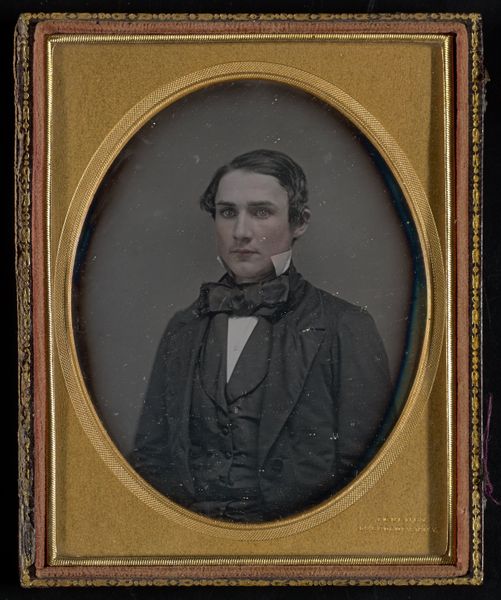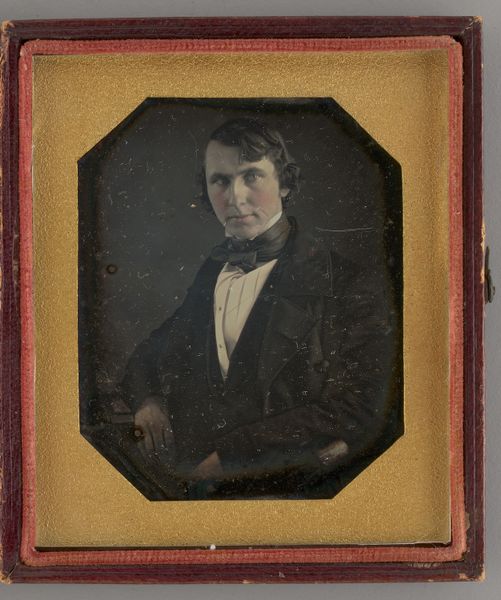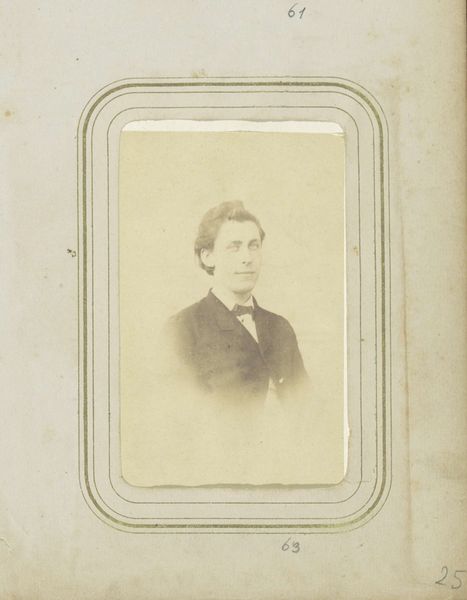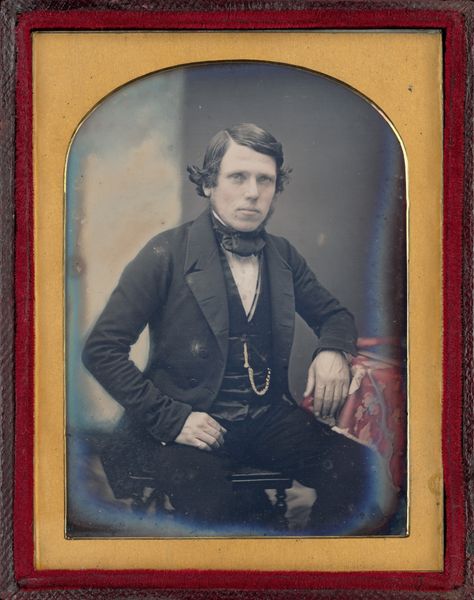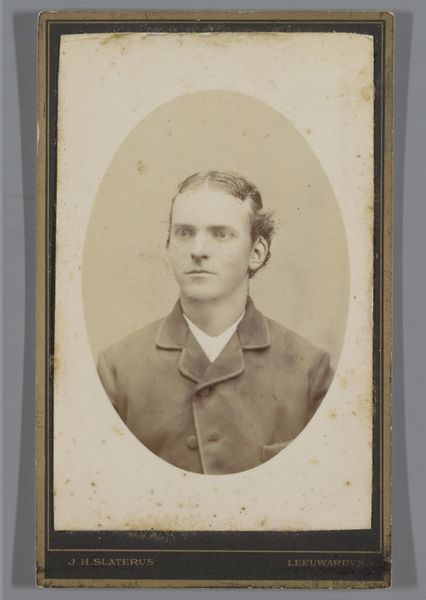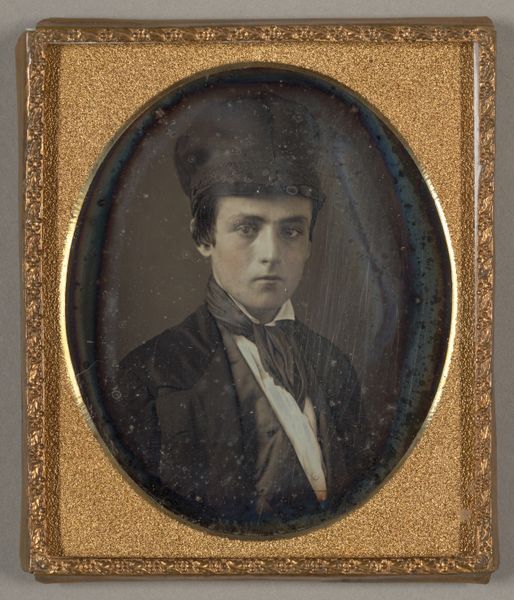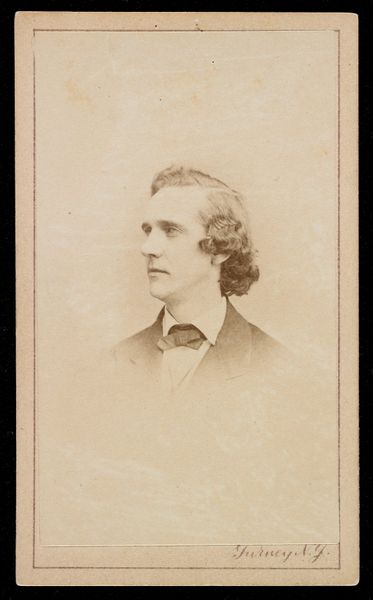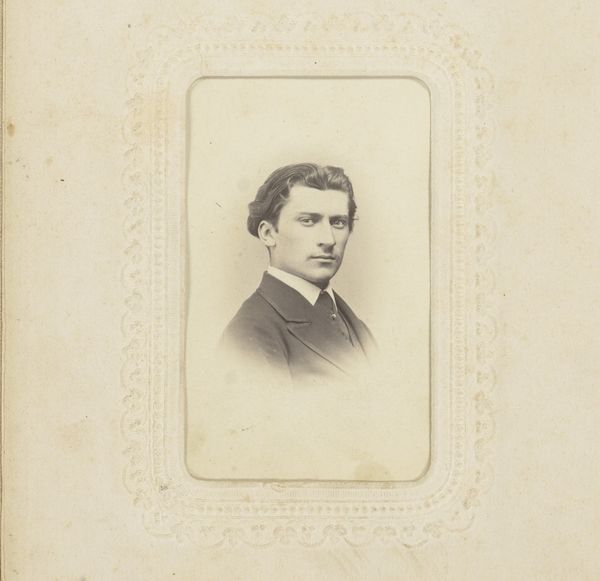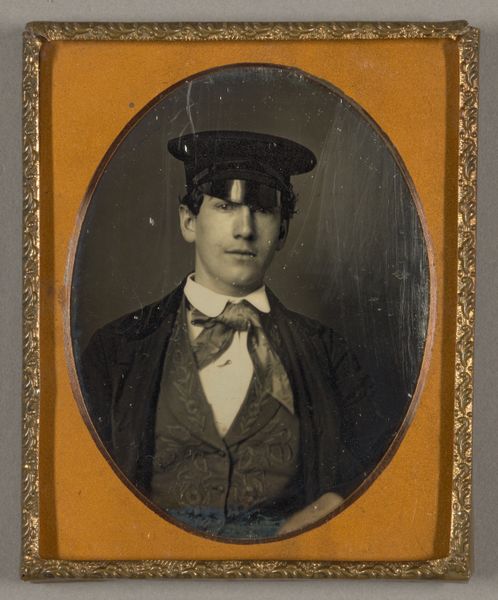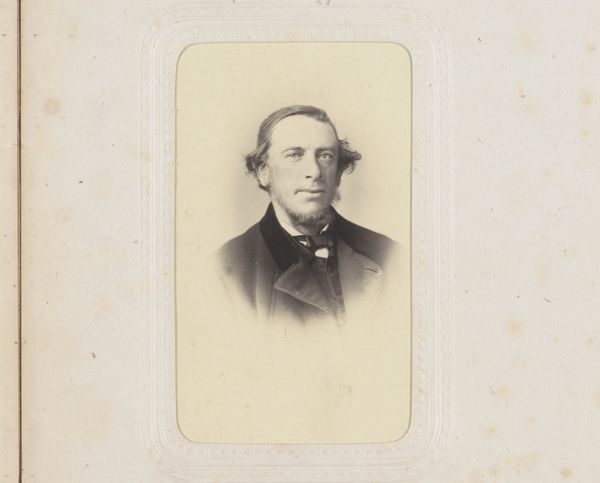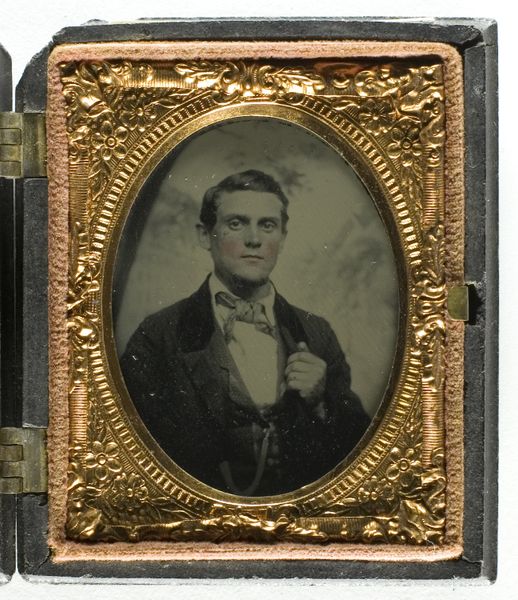
daguerreotype, photography
#
portrait
#
16_19th-century
#
daguerreotype
#
photography
Dimensions: 8.2 × 7 cm (3 1/4 × 2 3/4 in., plate); 9.2 × 16 × 1 cm (open case); 9.2 × 8 × 1.5 cm (case)
Copyright: Public Domain
This is an untitled portrait of a man by Edward Anthony, created using photography. The photograph presents a somber tonality, achieved through a narrow spectrum of blacks, whites, and grays. The composition, enclosed within an oval frame, directs our gaze toward the sitter’s face. Notice the balance and symmetry maintained in the arrangement of the subject's features and attire, from the neat parting of his dark hair to the carefully knotted tie, suggesting a structured presentation of self. Consider the historical context in which the daguerreotype emerged, a period marked by the rise of positivism and an emphasis on empirical observation. Photography, with its apparent ability to capture reality objectively, reflects these values. The very act of portraiture during this era becomes a statement about identity and social standing. The photograph's formal qualities—its tonal range, composition, and the subject’s studied pose— invite us to consider the broader cultural and intellectual currents shaping both the creation and reception of photographic images. Each element serves as a sign, contributing to a larger discourse about representation, identity, and the nature of perception.
Comments
No comments
Be the first to comment and join the conversation on the ultimate creative platform.
